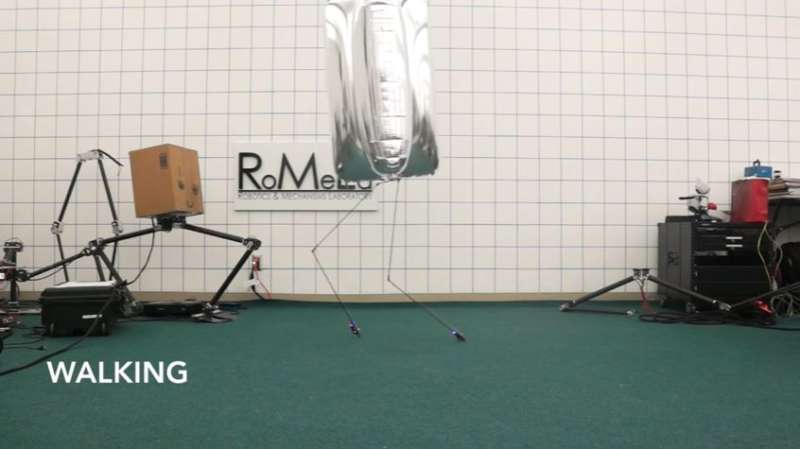November 18, 2016 weblog
What if robots never fell? Meet BALLU

(Tech Xplore)—Robots of the humanoid variety intrigue us, at times delight us, and at other times scare us silly. The thought of a robot malfunctioning, dropping its pizza tray or loading tool to turn around and murder us, haunts teens and adults alike.
A humanoid robot recently making its debut at an IEEE conference, however, is hardly scary. This humanoid robot is blimp bodied, designed such that it cannot fall.
It's a blimpy robot and its designers had a purpose in mind that wasn't just robot-making for fun and games.
"Robots are often associated with being heavy, mechanized metal objects. In fact, most current bipedal robots are unsafe, unstable, complex, expensive, and slow. The risks, inefficiencies, and danger involved prevents their widespread use and interaction with humans."
Sepehr Ghassemi and Dennis Hong of the RoMeLa (Robotics & Mechanisms Laboratory at UCLA) said their robot uses buoyancy to aid its stability and increase safety. "As a matter of fact, it cannot fall."
They presented their work, "Feasibility Study of a Novel Robotic System "Feasibility Study of A Novel Robotic System BALLU: Buoyancy Assisted Lightweight Legged Unit," earlier this week at an IEEE event about humanoid robots.
The robot is named BALLU (Buoyancy Assisted Lightweight Legged Unit) and its development, as the video relays, started off with a what-if.
What if robots never fell? Better still, what if we could change the direction of gravity?
This robot has a buoyant upper body. Helium filled balloons are essentially the upper body. Still, as Even Ackerman pointed out in IEEE Spectrum, "It's not lighter than air, so it doesn't float by itself, and requires some assistance (legs, in this case) for support and to control its motion."
According to its makers, "All actuation, communication, and power components are built into the feet which make up the majority of the robots mass." The buoyancy force from the body assists the legs to stay upright.
Ackerman commented on those toothpick legs: "Since the robot's legs don't have to handle a bunch of weight, they can be skinny little twiggy things, and in fact there's just one single degree of freedom per leg, in the knee. The knees are cable driven, with the actuators in BALLU's feet, along with communications and power components."
The prototype shown in the video is a biped with two degrees of freedom. One degree of freedom per leg. The knees are actuated (cable driven from the feet).
"Yet, with only one degree of freedom per leg, the robot can walk forwards, walk backwards, step sideways, turn, hop, and perform other types of motion. This is achieved with correct timing of the actuation of each knee along with careful consideration for momentum, drag, joint velocity, joint friction, and joint elasticity."
"To get creative ideas, sometimes we ask ourselves crazy, ridiculous questions," UCLA's Hong told IEEE Spectrum. "Oftentimes these lead to crazy, ridiculous answers, which lead to ingenious ideas."
The robot is lightweight and safe but you can be excused if you are wondering of what possible practical use could this BALLU be? According to the report in IEEE Spectrum, "Hong describes it as more of a "walking information device."
BALLU is in the very early stages of development, said Ackerman.
So what's next? "There's a quadruped version, a version that can carry more payload, and a version with some kind of articulated upper body," he said.
© 2016 Tech Xplore




















